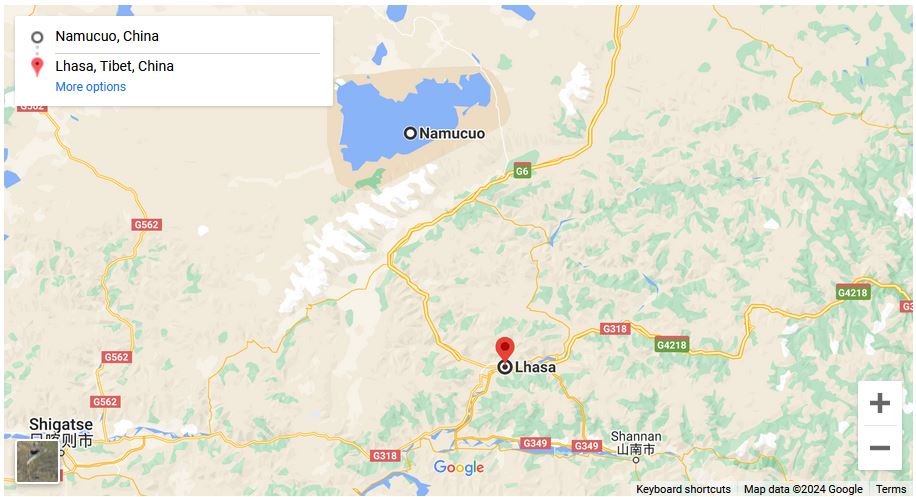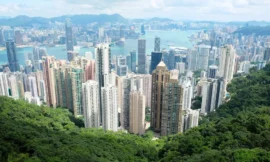The return journey from Namtso Lake to Lhasa is a captivating venture that retraces the path through the mesmerizing landscapes of Tibet, offering travelers a chance to reflect on the spiritual serenity of the “Heavenly Lake” and immerse themselves once again in the vibrant culture of Lhasa.
As one departs from the tranquil shores of Namtso Lake, the journey takes travelers through the vast Tibetan plateau, with the Nyenchen Tanglha mountain range standing as a majestic sentinel in the distance. The air, crisp and invigorating, carries the essence of the high-altitude plains, and the journey unfolds as a testament to the raw beauty and pristine wilderness that define the Tibetan landscape.
Driving back towards Lhasa, the road winds through nomadic settlements, where traditional Tibetan yurts dot the expansive plains. Nomadic herders tend to their yaks, creating a scene that seems suspended in time. It’s a poignant reminder of the resilient way of life that has endured in this region for centuries, shaped by the harsh yet breathtaking environment.
En route, the Yangpachen Hot Springs beckon once again, offering weary travelers a chance to rejuvenate in the therapeutic waters surrounded by snow-capped peaks. The contrast between the warmth of the springs and the cool, mountainous air adds a unique touch to this leg of the journey.
Approaching Lhasa, the landscape undergoes a transformation as the vast plains give way to the undulating hills leading to the city. The iconic Potala Palace emerges on the horizon, standing as a symbol of Tibetan spirituality and cultural richness. The sight of this grand structure, perched atop Red Hill, evokes a sense of awe and reverence, signaling the return to the heart of Tibetan civilization.
Re-entering Lhasa, travelers find themselves immersed once again in the vibrant tapestry of Tibetan culture. The Barkhor Street, encircling the Jokhang Temple, comes alive with the bustle of pilgrims and locals engaging in commerce and religious activities. The intricate designs of prayer flags flutter in the wind, carrying the hopes and prayers of those who traverse the ancient city streets.
Jokhang Temple itself, with its sacred ambiance and historic significance, invites visitors to delve deeper into the spiritual essence of Lhasa. The Sera Monastery, where monks engage in animated debates, and the Drepung Monastery, with its peaceful courtyards, stand as reminders of the enduring influence of Tibetan Buddhism.
Culminating the journey, the return to Lhasa brings with it a sense of completion and a profound appreciation for the seamless blend of spirituality and nature that characterizes this region. The memories of Namtso Lake’s reflective waters and the untamed beauty of the Tibetan wilderness linger, providing a lasting impression of a pilgrimage that transcends the ordinary.
In conclusion, the journey from Namtso Lake back to Lhasa is a poignant exploration of the dynamic contrasts that define Tibet. From the ethereal beauty of the high-altitude landscapes to the spiritual sanctuaries nestled in the heart of Lhasa, the voyage encapsulates the essence of a land where nature and culture coexist in a harmonious dance, leaving travelers with a deep and enduring connection to the soul-stirring spirit of Tibet.



